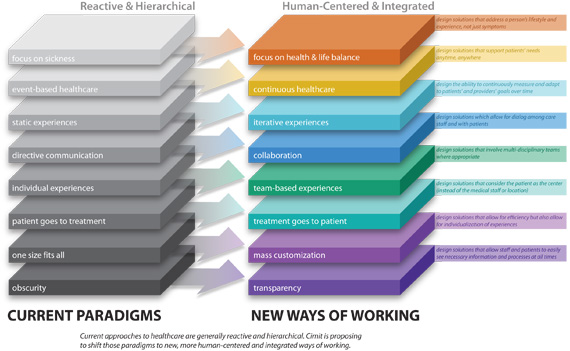
While researching trends in patient-focused design, I came across an incredible group and website dedicated to improving healthcare delivery on multiple fronts: CIMIT: Center for Integration of Medicine & Innovative Technology
A non-profit consortium of Boston's leading teaching hospitals and universities, CIMIT fosters interdisciplinary collaboration among world-class experts including scientists, engineers, clinicians, companies, foundations, and individuals interested in accelerating the impact of technology on patient care. CIMIT launched a pioneering initiative in 2002 in collaboration with Massachusetts’s General Hospital with the “Operating Room of the Future” (ORF) project, with the full support of the institution’s clinical and administrative leadership. The ORF is a “living laboratory” that explores new technology platforms and systems of care for performing minimally invasive surgical procedures.
Subsequent CIMIT Of the Futures efforts include detailed studies in other areas including:
- Neonatal Intensive Care Unit (NICU) of the Future
- Emergency Department of the Future
- Ambulatory Practice of the Future (APF)
The incorporation of data capture, analysis, and metrics of ROI are key to effectively disseminating the “best of” systems technologies and innovative patient-care pathways to other members of their consortium and ultimately to all of us focused on improving the healthcare experience. In-depth research, cutting-edge ideas, all at your fingertips. Check them out at www.cimit.org.
Current approaches to healthcare are generally reactive and hierarchical. CIMIT proposes to shift those paradigms to new, more human-centered and integrated ways of working:

Authored by Sherri Bowman, formerly with Array Architects.

